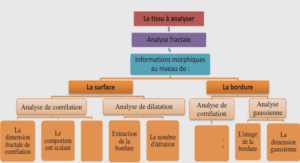Vulture Funds and the Sovereign Debt Market
Throughout the last three decades, vulture funds and rogue creditors changed the business of sovereign debt by taking advantage of sovereign defaults. Vulture Funds are hedge funds that buy distressed debt of highly indebted countries at a discount in the secondary market. The primary holders of the debt are usually more than willing to rid themselves of the bonds even at a lower selling price since they are aware that the countries in question will face debt restructuring negotiations soon. When the countries default on their debt and arrive at the point of writing it off, vulture funds sue the debtor government for the full value of the debt plus interest. Vultures seek to recover the full face value of the bonds they purchased and make excessive profits. They are usually based in offshore tax heavens and their activities are undertaken through informal channels and without proper supervision.
The Latin American debt crisis was a turning point that changed private investors’ attitude towards sovereign states, inspiring them to take a very determined approach to getting their contracts enforced. Through specific legal interventions and aggressive strategies, rogue creditors seek to make excessive profits at the expense of poor countries that cannot serve their debt obligations. The default of Argentina in 2002 highlighted creditors’ determination to collect sovereign assets and revealed the importance of litigation as a means to collect sovereign assets. Vulture funds question the fundamentals of the sovereign debt market. On the one hand, it is argued that vulture investors take advantage of countries’ economic hardship. On the other hand, vulture funds and their litigation strategies keep the market alive by discouraging moral hazard and forcing sovereign states to be more responsible in managing public finances.
Simultaneously, the financial transformation of the world and the liberalization of capital challenged the states’ sovereign power vis-à-vis individual creditors. The role of these creditors in the global economy becomes more important in terms of influencing economic policy-making and disrupting debt restructuring processes. The absence of clear rules in the international arena and the lack of institutional structures have created the need for a more regulated sovereign debt market that prevents, manages and resolves debt crises more effectively.
Private Creditors and the Sovereign Debt Market: Historical Evolution
During the first decades after the Second World War the sovereign debt market was limited to loan agreements. Before 1970 lending to sovereign countries was in the form of government-to-government loans or development aid funds offered by international organizations, such as the World Bank and the International Monetary Fund1. From the mid-1970s commercial banks emerged as the principal financial intermediaries and started allocating credits to developing countries in the form of syndicated loans. The rise in the price of oil during this period generated huge surpluses for oil-exporting countries, which needed to be recycled to oil-importing countries in the form of capital flows2. Thus, commercial banks sought to recycle the petro-dollar funds and finance the Least Developed Countries (LDCs) of the world.
The transition from government-to-government loans to commercial bank syndicated credits was based on the general belief that the governments of industrial countries guarantee the loan offers to the developing countries. The misleading perception about the guarantees on the syndicated loans led commercial banks to take excessive risks and to ignore the credit quality of debtor countries3. However, banks did not pursue vulture strategies because of the strict bank regulation and the use of monitoring mechanisms that prevented them from suing sovereign governments in the event of a default. Moreover, sovereign immunity was protected and the enforcement of debt contracts was complicated by the increasing difficulty of creditors to collect sovereign assets. From the late 1970s private sector lending expanded and governments decided to help the sovereign lending market develop by making it more flexible and restraining the definition of sovereign immunity. The United States’ Foreign Sovereign Immunities Act of 1976 and Great Britain’s State Immunity Act of 1978 guaranteed the right of foreign creditors to seize assets abroad and allowed governments to reforms5. The Plan illustrated the belief that economic growth was the key to resolving debt problems and, for this reason, sought to restore private capital inflows to heavily indebted countries. The market-oriented reforms were also supported by commercial banks that provided refinancing to distressed debtor countries. Despite the series of debt rescheduling that followed the Plan, these measures were not enough to reestablish the financial stability needed in emerging markets.






